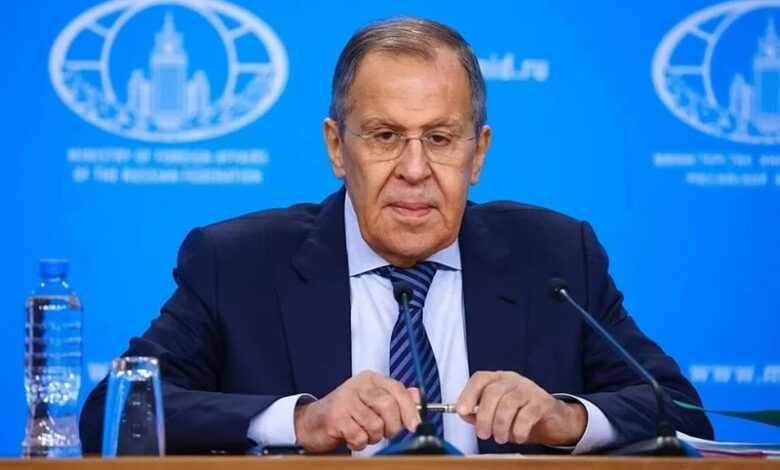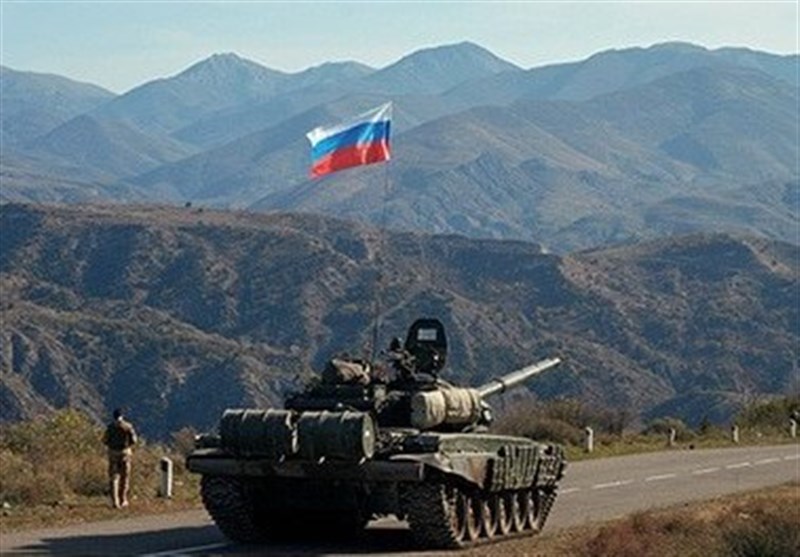Where does Russia stand in the Caucasus crisis?

| After the collapse of the Soviet Union, the Russians tried to keep their former republics dependent on them in various ways and prevent these newly independent countries from falling into the lap of the West as much as possible. |
According to the international group Tasnim news agency, a few days ago, Russian Foreign Minister Sergey Lavrov during In his annual press conference, he made statements regarding the relations between Baku and Yerevan and Russia’s position regarding the existing tensions.
This is despite the verbal conflicts between the two presidents of Armenia and the Republic of Azerbaijan over the past two weeks. Discussions related to the Zangzor Corridor and some border conflicts have intensified. Among them, the actions and statements of regional and extra-regional countries, including Russia, Iran, Turkey, France, and the Council of Europe, each seeking to maximize their interests. political and geopolitical are in the South Caucasus region, it has had an effect on the intensity and weakness of the existing tensions in the region. Meanwhile, Russia as a powerful neighbor next to the borders of both countries, which has a potential impact on politics, economy And the security of Baku and Yerevan has been and still is, it has tried to introduce itself as the only savior and the only government that has the ability to peacefully resolve the issues of the region by managing the conflicts and keeping the existing tensions frozen, especially the territorial issues. /p>
In simpler terms, the management of the Russians since the time of the Soviet Union and the rise of Stalin has been based on the premise that by creating permanent crisis centers in the Central Asia and the Caucasus, it can prevent the complete independence of these republics or any alliance between them. and these areas are constantly dependent on the central government in order to solve the crisis.
One of the implementation examples of this policy is the creation of the Nakhchivan Autonomous Region under the supervision of the “Azerbaijan Soviet Socialist Republic” outside the official borders of this country as An outlying region or the granting of autonomy to the “Mountainous Karabagh” region in the territory of Azerbaijan under the tutelage of the Armenian Soviet Socialist Republic, he noted that later these decisions underwent extensive changes within the Soviet government structures. Between these political units, until today there is no accurate basis for identifying the border lines between the two countries. After the collapse of the Soviet Union, modern Russia tried to follow the same policies in the region in another way. He took South Caucasus, but this time with a different definition. In its national security doctrine, modern Russia named the countries of the Caucasus and Central Asia as the first ring of its security and placed these countries under the banner of regional economic and security organizations under its control umbrella.
The Russians tried to continue the former republics. keep themselves dependent on themselves in various ways and prevent these newly independent countries from falling into the lap of the West as much as possible. It is followed by the Kremlin. Using the potential of challenging points such as the separatist regions of South Ossetia and Abkhazia in Georgia and Nagorno-Karabakh between Armenia and the Republic of Azerbaijan is a clear example of Russia’s role in managing the trends in this region.
Did Russia make a mistake?
The second Karabakh war in 2020 brought another level of Russian role-playing in the region. The Kremlin tried to play a stronger presence in managing the tension between Baku and Yerevan. Therefore, acting as a mediator, he signed a 3-way peace treaty between the two countries. The important point of this treaty is the presence of Russian peacekeeping forces until 2025 with a 5-year extension period in the disputed region between the two countries. Was. In this way, in addition to the presence of their forces in the 102nd military base of Armenia under the name of the forces of the Collective Security Treaty, the Russians also deployed nearly 2 thousand troops in the territory of the Republic of Azerbaijan and in Nagorno-Karabakh. Also in paragraph 9 of this According to the peace treaty, Armenia was obliged to provide transportation routes for the transfer of Azeri nationals from the main territory of this country to the Nakhchivan Autonomous Region, whose protection and security was the responsibility of the border forces of the Russian Federal Security Service.
According to the policy of the Russians, the crisis in the South Caucasus was not only not resolved, but with the blood spilled on both sides, a new and deeper wound was created between the two countries, and Moscow was still the authority to deal with and resolve the tension between Baku and Yerevan according to the existing treaties.
But in the meantime, due to the rapid developments that were taking place in the international system, such as Russia’s entry into the war with Ukraine and, of course, the reduction of the Russians’ focus on the developments in the Caucasus region, the importance of the North-South corridor for Russians in the new embargo conditions, the rapid change of the Armenian government’s approach in order to find new supporters among European countries, the double importance of the Republic of Azerbaijan for the European Union in order to provide energy resources and the increasing weight of Turkey in Russia’s foreign policy in the conditions of the war with Ukraine, which was able to increase Ankara’s bargaining power. and greatly increase the concessions from the two parties involved, namely the Kremlin and the collective West, caused serious changes in the Karabakh crisis.
The result of regional and international developments ultimately led to the Third Karabakh War and the complete recapture of the Nagorno-Karabakh region. by Baku and as a result led to the 2020 peace agreement becoming irrelevant. A point that should be pointed out in the course of developments in the region from 2020 onwards is the trend of Russia’s wrong policies towards the crises and challenges of the South Caucasus region, which will eventually lead to the complete withdrawal of Russian forces from the region.
On this basis, the presence and mission of Russian peacekeeping forces in the Karabakh region It has ended and according to the request of the government of the Republic of Azerbaijan, the Russian forces must leave the region. Also, with the intensification of the differences between Moscow and Yerevan regarding the operation of the Collective Security Organization and the continued desire of Armenia to leave this organization and find Western allies, it seems that in the near future we should see the withdrawal of Russian soldiers from the 102 Gyumri base of Armenia.
However, the presence of the Russian Federal Security Service as an observer and security provider of the communication routes between the main land of Azerbaijan and the Nakhchivan region, which is mentioned in the 2020 peace treaty, was the last base of the presence of the Russians in the region.
After handing over Karabakh to the government of Azerbaijan, the Pashinyan government rightly claims that the issues raised in the 2020 peace agreement have been completely abandoned. Because all the cases mentioned in this treaty were based on the non-recognition of the sovereignty of the Nagorno-Karabakh region. Even if Yerevan does not want to invoke the non-implementation of other provisions, such as the closing of Dalan Lachin corridor or the evacuation of Armenians from the Karabakh region, the disappearance of the subject of the treaty can invalidate all clauses under the agreement.
Among them, the presence of troops Russia in the territory of Armenia to monitor the security of the communication road between Nakhchivan and the Republic of Azerbaijan. Therefore, in his last press conference on January 18, Sergey Lavrov responded to Armenia’s request for Yerevan to fully monitor all communication routes in the country. In response to a question about Armenia’s readiness to use Iran’s model in providing transit, customs and visa services to Azerbaijani nationals who want to travel between Nakhchivan and the Republic of Azerbaijan, he said: He called it “irrational and incomparable”. Lavrov further accused Armenia of following Western plans and said that this country’s request to exercise sovereignty over the routes in Armenia is contrary to the agreements. done between the three countries.
It should be mentioned that Nikol Pashinyan had stated in his party meeting that Armenia is ready to provide communication channels to Azerbaijan with conditions like Iran (visa control for nationals and receiving customs and control for cargo) This means that Armenians will not pass their sovereignty over routes, customs rules and passenger control, but they can adjust these rules a little by mutual agreements.
It can be considered in line with the Kremlin’s last efforts to not completely withdraw the military from the South Caucasus region after 1828, and in a sense the failure of Russia’s Caucasus policies after the start of the war in Ukraine, which was caused by a misunderstanding of the current trends and the role of other actors in the Caucasus region. has been accompanied by the South, it has put the politicians of this country in a strategic impasse.
Author Mehdi Saif Tabrizi, a researcher in the field of Russia and the Caucasus
end of message/
| Publisher | Tasnim News |



